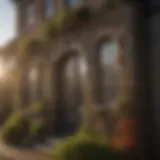Effective Ways to Eliminate Stink Bugs in Your Household
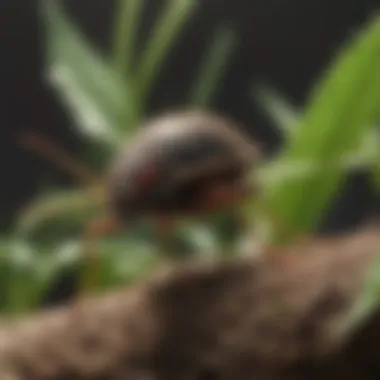

Preventive Pest Control Strategies
To begin effectively eliminating stink bugs in your household, it is vital to implement preventive pest control strategies. Starting with House Exterior Protection, sealing cracks in your home's exterior is crucial as stink bugs often find their way through these openings. Clearing debris around the house and preventing pests from entering by utilizing door sweeps and ensuring windows are tightly sealed are essential steps to keep stink bugs at bay.
In terms of Yard Maintenance, regularly mowing the lawn, trimming vegetation away from the house, and disposing of any standing water can help reduce stink bug habitats in your yard. Employ methods such as planting certain flowers and herbs known to repel pests to maintain a pest-free outdoor environment.
For Indoor Cleanliness, expert cleaning tips and techniques involve vacuuming regularly, wiping down surfaces with effective cleaners, and reducing clutter where pests can hide. Keeping a clutter-free and well-ventilated indoor space helps deter stink bugs from taking up residence in your home.
When it comes to Garbage Disposal, employing efficient waste disposal methods such as sealing trash bags tightly, emptying bins regularly, and cleaning out garbage cans to prevent attracting stink bugs is imperative. Moreover, understanding the importance of proper garbage disposal in deterring pests from scavenging for food sources is key to minimizing stink bug infestations.
Explore Other Pest Prevention Strategies which include innovative ways to safeguard your home, such as using natural repellents like diatomaceous earth or creating physical barriers to block pest entry points. These strategies complement traditional pest control methods and provide a holistic approach to keeping stink bugs away from your living space.
Understanding Stink Bugs
Stink bugs, scientifically known as Halyomorpha halys, are a prevalent nuisance for homeowners, especially during the warmer months. Understanding the behavior and characteristics of stink bugs is paramount in effectively eliminating and preventing infestations in residential spaces. By delving into the specifics of stink bug biology and habits, individuals can implement targeted strategies to combat these persistent pests.
Identifying Stink Bugs
Distinct Physical Features
Stink bugs are easily recognizable due to their shield-shaped bodies and various shades of brown or green coloration. Their distinct appearance serves as a key identifier for homeowners looking to spot and differentiate stink bugs from other common insects. This physical feature plays a crucial role in the proper identification of stink bugs, aiding in the implementation of appropriate elimination methods.
Behavioral Patterns
Stink bugs exhibit notable behavioral patterns, including congregating in large numbers on sun-exposed surfaces and emitting a pungent odor when threatened. Understanding these behaviors is fundamental in devising control measures that target specific stink bug actions and preferences. By recognizing their tendencies to seek warmth and shelter indoors, individuals can take proactive steps to fortify entry points and deter stink bug intrusion.
Life Cycle of Stink Bugs
Egg Stage
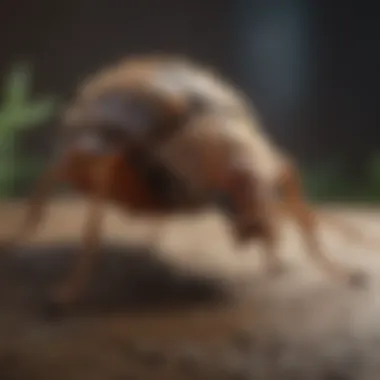

Stink bugs begin their life cycle as eggs, which are typically laid on the underside of leaves in clusters. These tiny, barrel-shaped eggs are a key developmental stage for stink bugs, offering insight into their reproductive patterns and population growth. By identifying and eliminating stink bug eggs, homeowners can disrupt the breeding cycle and prevent future generations from emerging within their living spaces.
Nymph Stage
During the nymph stage, young stink bugs emerge from their eggs and undergo several molts as they mature into adulthood. Their gradual progression through nymphal instars highlights the developmental phases stink bugs undergo before reaching full maturity. Recognizing stink bugs in the nymph stage is essential for implementing control measures that target vulnerable juvenile insects and limit their ability to reproduce.
Adult Stage
At the adult stage, stink bugs reach full maturity and become active in seeking food sources and overwintering sites. Their distinct coloration and behavioral patterns become more pronounced, signaling their readiness to breed and expand their populations. By understanding the characteristics of adult stink bugs, homeowners can tailor their eradication efforts to disrupt mating and curb the overall stink bug population within their surroundings.
Preventive Measures
In the battle against stink bugs invading your home, preventive measures play a crucial role in deterring these nuisance pests. By establishing a proactive defense strategy, you can minimize the chances of stink bugs finding their way inside your living spaces. Implementing preventive measures not only helps in eradicating existing infestations but also acts as a shield against potential future invasions, ensuring a comfortable and bug-free environment within your household.
Sealing Entry Points
Caulking Cracks and Gaps
When it comes to sealing off potential entry points for stink bugs, caulking cracks and gaps prove to be a fundamental yet highly effective approach. The meticulous process of sealing any crevices or openings in walls, windows, doors, and piping prevents stink bugs from infiltrating your home. The impermeability provided by caulking ensures that stink bugs have limited access, reducing the likelihood of infestations significantly. Its seamless application and durable nature make caulking a popular choice for reinforcing the structural integrity of your living space and keeping stink bugs at bay.
Installing Door Sweeps
Installing door sweeps is a strategic method to fortify your home against stink bug intrusions. Door sweeps act as barriers at the bottom of doors, tightly sealing the gap between the door and the floor. This simple yet effective solution prevents stink bugs from sneaking in through tiny spaces, safeguarding your home from these unwanted guests. Door sweeps are easy to install, low-maintenance, and offer a practical way to enhance the security of your entry points, making them an essential component of stink bug prevention.
Maintaining Cleanliness
Regularly upkeeping cleanliness in and around your home is paramount in staveing off stink bug infestations. By adhering to a consistent cleaning routine, you eliminate potential food sources and hiding spots for stink bugs, discouraging their presence. A clutter-free environment coupled with proper waste disposal practices creates an inhospitable habitat for stink bugs, disrupting their breeding and foraging patterns. The meticulous attention to cleanliness not only deters stink bugs but also promotes overall hygiene and orderliness in your living space, fostering a healthy and pest-free home environment.
Regular Cleaning Routine
A regular cleaning routine involves thorough vacuuming, dusting, and decluttering to eliminate stink bug attractants such as crumbs, spills, and clutter. Consistent cleaning efforts significantly reduce potential hiding spots and remove scent trails that lure stink bugs indoors. By maintaining a clean and well-organized living space, you create an inhospitable environment for stink bugs, diminishing their chances of infesting your home.
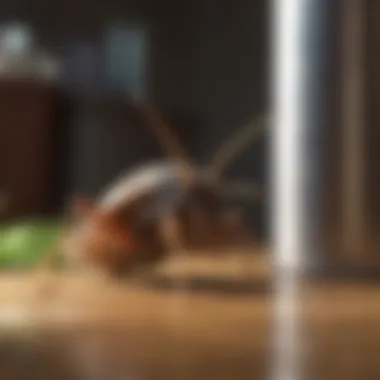

Proper Waste Management
Proper waste management practices are essential in preventing stink bugs from thriving in your household. Prompt disposal of garbage, sealing trash bins securely, and minimizing food residues help deter stink bugs attracted to food sources. Ensuring that organic waste is properly composted or disposed of in sealed containers reduces the risk of stink bug infestations. By prioritizing proper waste management, you not only keep stink bugs at bay but also contribute to a cleaner and healthier living environment for you and your family.
Natural Remedies
In the realm of fighting against stink bugs infiltrating your living space, natural remedies play a vital role in maintaining a pest-free environment. Unlike harsh chemicals that may pose risks to both your family and the ecosystem, natural remedies offer a safer alternative with effective results. Embracing natural approaches not only helps combat stink bugs but also aligns with eco-conscious sensibilities. While chemical treatments may provide immediate relief, the long-term benefits of natural remedies are undeniable.
Using Essential Oils
Lavender Oil
Lavender oil emerges as a standout remedy in the battle against stink bugs due to its powerful scent that repels these pests effectively. Its soothing fragrance not only masks the presence of stink bugs but deters them from invading your living spaces. Additionally, Lavender oil boasts antifungal and antibacterial properties, making it a multipurpose weapon against various household nuisances. The versatility of Lavender oil makes it a staple choice in combating stink bugs naturally.
Peppermint Oil
Peppermint oil stands out as another formidable contender in the fight against stink bugs. Its strong odor acts as a natural repellent, deterring stink bugs from infesting your home. Moreover, Peppermint oil serves as a natural pesticide, offering a non-toxic yet potent solution for pest control. The invigorating scent of Peppermint oil not only freshens up your living space but also serves as a powerful tool in warding off unwanted stink bugs.
Creating DIY Traps
Delving into do-it-yourself traps represents a proactive approach in managing stink bug infestations without resorting to harmful chemicals. These traps are cost-effective, environmentally friendly, and can be tailored to suit your specific needs. By creating your traps, you take control of the situation and actively work towards removing stink bugs from your home.
Homemade Vinegar Trap
Crafting a homemade vinegar trap involves using minimal materials yet yielding maximum results. Stink bugs are attracted to the scent of vinegar, making it an effective bait for luring and trapping them. This simple yet efficient trap not only captures stink bugs but also ensures they are safely removed from your living space, mitigating the risk of future infestations.
Light Trap
The light trap serves as a strategic tool in combating stink bugs by capitalizing on their attraction to light sources. By incorporating a light trap into your pest control strategy, you can effectively lure stink bugs towards the trap, where they are subsequently captured. This method not only helps in reducing stink bug populations indoors but also offers a sustainable and chemical-free approach to pest management.
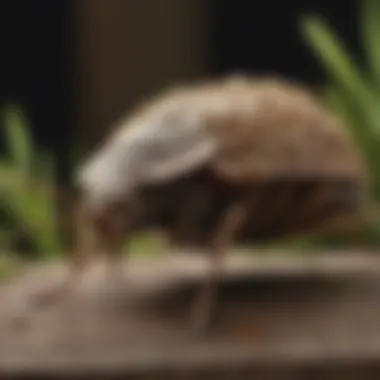

Chemical Treatments
In the battle against stink bugs, chemical treatments play a crucial role in effectively eliminating these persistent pests from your home environment. Chemical treatments offer a targeted and potent solution to tackle stink bug infestations, providing a reliable way to control and eradicate these bothersome insects. When considering chemical treatments, it is essential to understand the specific elements, benefits, and considerations associated with their use in combatting stink bugs.
Insecticidal Sprays
Pyrethroid Sprays
Pyrethroid sprays are a key component of chemical treatments for stink bugs due to their potent insecticidal properties. These sprays contain synthetic pyrethroids, which are highly effective in targeting and eliminating stink bugs upon contact. The key characteristic of pyrethroid sprays lies in their ability to disrupt the nervous system of stink bugs, leading to rapid paralysis and eventual death. This mode of action makes pyrethroid sprays a popular and beneficial choice for effectively managing stink bug populations within your home. While pyrethroid sprays offer rapid knockdown of stink bugs, it is important to note that repeated use may lead to resistance development in stink bug populations.
Neonicotinoid Sprays
Neonicotinoid sprays represent another critical category of chemical treatments utilized in stink bug control efforts. These sprays contain neonicotinoid compounds known for their systemic action, allowing for both contact and ingestion toxicity against stink bugs. A key characteristic of neonicotinoid sprays is their long-lasting residual effect, providing extended protection against stink bug re-infestations. Due to this unique feature, neonicotinoid sprays are a popular choice for long-term management strategies. However, it is crucial to use neonicotinoid sprays judiciously, as excessive application can lead to detrimental effects on non-target insect species and environmental health.
Dust Insecticides
Diatomaceous Earth
Diatomaceous earth serves as a natural and effective dust insecticide for combating stink bugs in your household. This powder-like substance is composed of fossilized remains of diatoms, which contain sharp microstructures capable of puncturing and dehydrating stink bugs upon contact. The key characteristic of diatomaceous earth lies in its mechanical mode of action, which targets the exoskeleton of stink bugs, leading to desiccation and mortality. This natural solution is invaluable for controlling stink bug populations without posing significant risks to human health or the environment. While diatomaceous earth offers non-toxic and eco-friendly pest control, it should be applied strategically in dry conditions for optimal effectiveness.
Boric Acid
Boric acid presents another dust insecticide option for addressing stink bug infestations in your home. This chemical compound acts as a stomach poison to stink bugs upon ingestion, disrupting their digestive system and eventually causing mortality. The key characteristic of boric acid is its slow-acting nature, allowing stink bugs to carry the substance back to their colonies, resulting in secondary kills within the population. While boric acid is known for its efficacy against a wide range of insect pests, including stink bugs, caution must be exercised during application to avoid accidental ingestion by pets or children. Additionally, prolonged exposure to boric acid can lead to resistance development in stink bug populations, emphasizing the need for rotation with other control methods for sustainable pest management.
Professional Extermination
In the battle against stink bugs, sometimes the most effective solution lies in seeking professional extermination services. Professional pest control services bring a level of expertise and experience that can efficiently tackle stink bug infestations. These professionals have a deep understanding of stink bug behavior, breeding patterns, and most importantly, effective elimination methods. Utilizing their services can significantly reduce the population of stink bugs in your home.
Hiring Pest Control Services
Assessment and Treatment:
When hiring pest control services for stink bug extermination, one key aspect is the thorough assessment and tailored treatment plan they provide. Pest control experts will conduct a comprehensive inspection of your home to identify the extent of the infestation and formulate a targeted treatment strategy. The detailed assessment ensures that the treatment plan is specifically designed to address your unique stink bug problem, maximizing effectiveness. This personalized approach is crucial in eradicating stink bugs efficiently and preventing future infestations. While the cost may be higher than DIY methods, the precision and effectiveness of professional assessment and treatment make it a worthwhile investment for stink bug elimination.
Preventive Recommendations:
Aside from eradicating existing stink bug populations, pest control services also offer valuable preventive recommendations to safeguard your home against future infestations. These recommendations may include sealing entry points, implementing landscaping modifications, or utilizing insect repellents in strategic areas. By following these preventive measures, you can create a barrier that deters stink bugs from infiltrating your home again. Pest control professionals can provide expert advice on maintaining a stink bug-free environment, offering peace of mind and long-term protection. Implementing these preventive measures is essential for sustainable stink bug control and ensuring your home remains pest-free.


